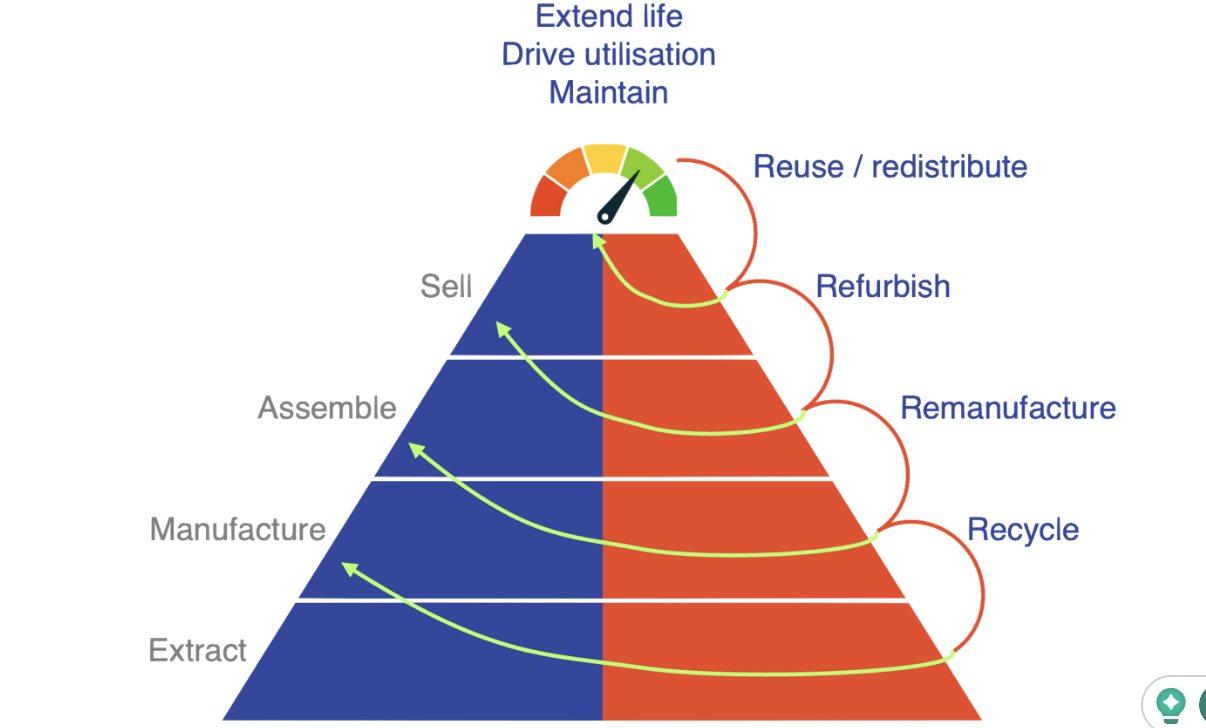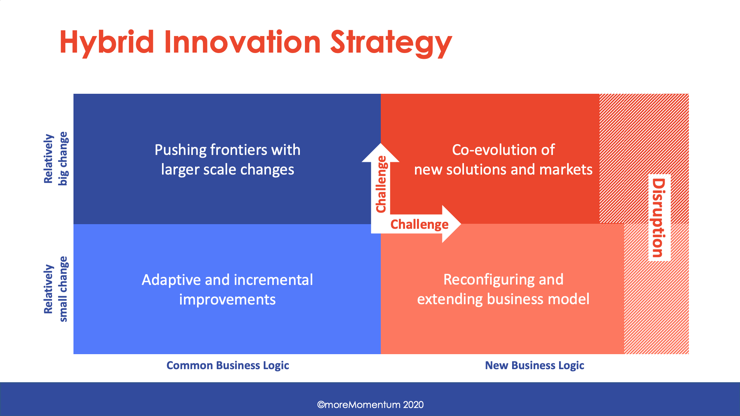How to Build a Growth-Driven Service Innovation Portfolio
A balanced mix of sustaining, adjacent, and transformational innovations is essential for long-term success in B2B manufacturing, but many companies...
2 min read
Jan van Veen
Aug 8, 2023 10:29:58 AM

In today's era, the acceleration of the circular economy is vital, with service innovation at the forefront of this shift. Service innovation effectively transforms potential threats into new opportunities, by adapting to evolving market demands, building new value streams in the circular model, and strengthening defences against new market entrants.
As we navigate the urgent global shift towards sustainable practices, the circular economy and service innovation stand at the forefront. The circular economy, a system designed to reduce waste and conserve resources, brings with it a paradigm shift in how we produce, consume, and dispose.
Service innovation becomes a vital tool in this transformation, offering dynamic new strategies for manufacturers to operate sustainably. Given the increasing pressure from governments, markets, and consumers for greener practices, understanding and harnessing these concepts has never been more relevant or crucial.
The essence of a circular economy lies in its ability to minimize waste and maximize resource efficiency through a series of key drivers.
Extending the lifetime of products and increasing their utilisation rate are core principles of the circular economy, encouraging us to "use more, consume less". Furthermore, principles of reuse, refurbishment, remanufacturing and recycling come into play, offering avenues to bring materials back into the economy.
These principles present challenges for manufacturers as they demand a shift from traditional linear models. Yet, they also open up significant opportunities for service innovation aimed at helping customers navigate this sustainable transition.
Service innovation empowers the transition to a circular economy through two primary pathways:
Both pathways underline how service innovation can not only facilitate the shift to a circular economy but also add value to customers and businesses in the process.
The journey towards a circular economy does present several strategic challenges. Key among these is the risk of cannibalization of existing business models, the threat of competition from innovative new entrants, and resistance from investors uncertain about the profitability of circular strategies.
Yet, service innovation offers a unique approach to navigating these complexities. For instance, it can evolve existing models to maintain competitiveness and reveal new opportunities, rather than cannibalizing them. Innovative service offerings can build competitive advantages that new entrants struggle to replicate. Finally, demonstrating tangible financial and environmental returns from circular services can sway investor sentiment positively, transforming these perceived threats into growth opportunities.
To harness the power of service innovation in accelerating the circular economy, three fundamental strategies are crucial.
First, building new domain expertise helps to foster innovative ideas that facilitate the circular transition.
Second, proactively managing risks ensures the sustainability of circular practices, even amid uncertainties.
Finally, fostering radical innovation encourages breakthrough thinking that can revolutionize traditional practices. It's important to emphasize that strategizing should be flexible, embracing both radical changes that redefine the business and incremental improvements that continually optimize performance.
In essence, service innovation is the powerful accelerator that propels the circular economy, transforming challenges into remarkable opportunities.
The Executive Service Roundtable recently took place, focusing on the topic: "Accelerating the Circular Economy: The Power of Service Innovation."
Discover the invaluable insights shared by industry experts, engage with like-minded professionals, and unlock practical strategies to unleash the full potential of your transforming service business.
If you missed this insightful event, don't worry! You can still learn more about the key takeaways and access the resources by clicking here.
Subscribe for the our Impulse Letter
With regular updates about service news, trends and best practices.

A balanced mix of sustaining, adjacent, and transformational innovations is essential for long-term success in B2B manufacturing, but many companies...

As we navigate the profound changes brought by digital transformation, relying solely on advanced maintenance and product support services is...

In a dynamic business landscape like in services for manufacturing companies, strategic thinking is a necessity. Cultivating this skill across all...